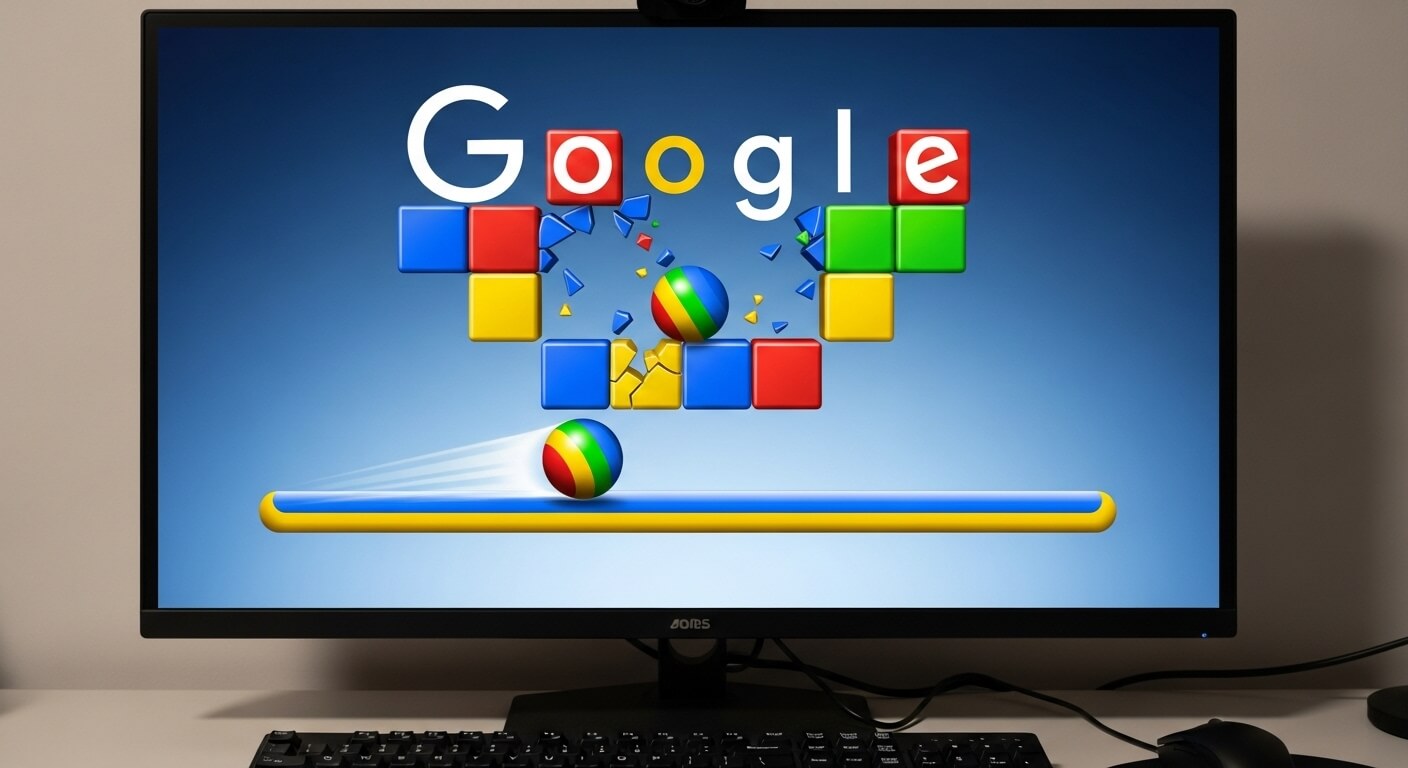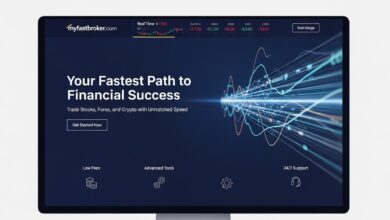In the vast digital landscape of Google Search, hidden gems often emerge to delight users with unexpected fun. One such treasure is Google Block Breaker, a nostalgic nod to classic arcade gaming that transforms your everyday search into an interactive adventure. If you’ve ever typed “google block breaker” into the search bar, you might have stumbled upon this addictive Breakout-style game, where a simple paddle and ball become tools for brick-smashing satisfaction. This game isn’t just a fleeting distraction; it’s a revival of Atari’s iconic Breakout, blending retro charm with modern accessibility. Whether you’re a seasoned gamer reminiscing about the 1970s arcades or a newcomer discovering hidden Google Easter eggs, this guide will dive deep into everything you need to know.
Google Block Breaker captures the essence of what made early video games so captivating: straightforward mechanics paired with escalating challenges. Released as part of Google’s ongoing tradition of Easter eggs, it allows anyone with an internet connection to play without downloads or apps. Simply search for “block breaker” on Google, and a playable module appears at the top of the results, inviting you to click “Play” and dive in. The game’s popularity surged in early 2025, with users sharing high scores on social media and forums, turning it into a viral sensation. But why does this matter? In an era dominated by complex multiplayer titles, Google Block Breaker reminds us of gaming’s roots—pure, skill-based entertainment that tests reflexes and strategy.
This article will explore the game’s origins, provide a comprehensive tutorial on how to play, offer expert tips for achieving high scores, compare it to similar games, and answer frequently asked questions. By the end, you’ll not only master Google Block Breaker but also appreciate its place in video game history. Let’s break down the blocks and uncover the secrets behind this hidden classic.
The Rich History of Breakout: From Atari Arcades to Google Easter Eggs
To truly understand Google Block Breaker, we must travel back to the 1970s, when video games were in their infancy. The story begins with Atari, the pioneering company that revolutionized entertainment. In 1976, Atari released Breakout, a game designed by Nolan Bushnell, the founder of Atari, with hardware contributions from Steve Wozniak (who later co-founded Apple). Breakout was conceived as a single-player evolution of Pong, Atari’s 1972 hit that simulated table tennis. Instead of two paddles batting a ball back and forth, Breakout featured one paddle at the bottom of the screen, tasked with bouncing a ball upward to destroy a wall of colorful bricks.
The inspiration for Breakout came from Bushnell’s desire to create a game that capitalized on Pong’s success while introducing new elements. He envisioned a “wall” of bricks that players would “break out” of, hence the name. Development was swift but innovative; Wozniak engineered a prototype with fewer chips than initially planned, earning a bonus—though legend has it Steve Jobs, then an Atari employee, pocketed most of it. Upon release in May 1976, Breakout became an arcade sensation, installed in bars, pizza parlors, and amusement centers across the U.S. Its simple yet addictive gameplay—controlling the paddle to keep the ball in play while clearing levels—drew crowds and generated quarters by the bucketful.
Breakout’s impact extended beyond arcades. In 1978, Atari released Super Breakout, which introduced variations like progressive levels, multiple balls, and power-ups. The game was ported to home consoles, including the Atari 2600, making it accessible to families. This home version sold millions, cementing Breakout as a household name. Culturally, it influenced countless clones and spin-offs, from Arkanoid in 1986 (which added boss battles and power-ups) to modern mobile games like Brick Breaker.
Fast-forward to the digital age, and Google enters the picture. Known for its playful Easter eggs—hidden features that surprise users—Google has a history of embedding games into its services. The original Atari Breakout Easter egg debuted in 2013 on Google Images. By searching “Atari Breakout,” the image results would transform into a playable game, with thumbnails becoming bricks. This clever integration celebrated the 37th anniversary of Breakout and showcased Google’s creative side.
In 2025, Google refreshed this concept with Block Breaker, a standalone searchable game that appears directly in search results. Unlike the image-based version, this iteration features a dedicated interface with vibrant graphics, sound effects, and progressive difficulty. It’s part of Google’s broader effort to make search more engaging, similar to other Easter eggs like the Pac-Man doodle or the Thanos snap. The timing aligns with a resurgence in retro gaming, fueled by platforms like Nintendo Switch Online and emulators.
What makes Google Block Breaker stand out in history? It bridges generations. For older players, it’s a trip down memory lane to Atari’s golden era. For younger audiences, it’s an introduction to foundational game design principles: physics-based interactions, risk-reward decisions, and endless replayability. The game’s evolution reflects broader trends in gaming—from coin-operated machines to browser-based fun—highlighting how classics endure in new forms.
Experts in video game history, like those from the American Classic Arcade Museum, note that Breakout’s legacy lies in its simplicity. It paved the way for genres like puzzle-platformers and even elements in modern titles like Portal, where breaking barriers is key. Google’s version preserves this while adding accessibility; no hardware required, just a search query. As we delve deeper, you’ll see how this history informs the gameplay, making every brick broken a nod to decades of innovation.
Step-by-Step Guide: How to Access and Play Google Block Breaker
Playing Google Block Breaker is as easy as performing a search, but mastering it requires practice. Whether on desktop, mobile, or tablet, the game is universally accessible, requiring only a modern browser and stable internet. Here’s a detailed walkthrough to get you started.
First, open your preferred web browser—Chrome, Firefox, Safari, or Edge all work seamlessly. Navigate to Google.com or use the Google app on your device. In the search bar, type “google block breaker” or simply “block breaker.” Hit enter, and at the top of the results, you’ll see a colorful card labeled “Block Breaker” with a “Play” button. Click or tap it to launch the game in fullscreen mode.
Upon starting, you’re greeted with a retro-inspired interface: a paddle at the bottom, a ball ready to launch, and rows of multicolored blocks above. The objective is straightforward—use the paddle to bounce the ball and destroy all blocks without letting the ball fall off the screen. You start with a set number of lives (typically three), and losing a ball costs one life.
Controls are intuitive and device-agnostic:
- Desktop/Laptop: Use your mouse to move the paddle left and right. Click to launch the ball initially.
- Mobile/Tablet: Swipe left or right on the screen to control the paddle. Tap to release the ball.
- Keyboard Option: On desktop, arrow keys or A/D keys often work as alternatives for precise movement.
The game begins slowly, allowing you to get a feel for the physics. The ball bounces at realistic angles based on where it hits the paddle—center for straight shots, edges for diagonals. As blocks are destroyed, the ball speeds up, and new levels introduce obstacles like unbreakable bricks or moving elements.
Power-ups add excitement. Destroying certain blocks releases items like:
- Extra Ball: Spawns additional balls for multi-ball chaos.
- Larger Paddle: Expands your paddle for easier catches.
- Laser: Allows the paddle to shoot lasers at blocks.
- Slow Down: Reduces ball speed temporarily.
Collect these by letting them fall onto your paddle. Missing them is harmless, but grabbing them can turn the tide in tough levels.
Progression is level-based. Clear all blocks to advance; fail to catch the ball too many times, and it’s game over. Scores accumulate based on blocks broken, combos (consecutive hits without missing), and level completions. High scores are displayed at the end, encouraging replays.
For optimal play, ensure your device is in landscape mode on mobile for better visibility. If the game lags, close other tabs or check your connection. Google Block Breaker is free, ad-free (beyond standard search elements), and doesn’t require sign-in, making it perfect for quick sessions.
Common pitfalls for beginners include over-reacting to ball speed or ignoring angles. Practice in the early levels to build muscle memory. With these steps, you’re ready to smash through walls—literally.
Advanced Gameplay Mechanics and Pro Tips for High Scores
Beyond basics, Google Block Breaker demands strategy to achieve those elusive high scores. Let’s break down the mechanics and share expert tips drawn from arcade veterans and online communities.
At its core, the game simulates physics: the ball’s trajectory follows Newtonian principles, bouncing off walls and paddle at equal angles. Hitting the paddle’s edge sends the ball sharply sideways, ideal for targeting corner blocks. Center hits keep it vertical, useful for clearing middle rows efficiently.
Levels escalate in complexity. Early stages have static bricks, but later ones feature:
- Indestructible Blocks: Gray or metal ones that redirect the ball without breaking.
- Multi-Hit Bricks: Require multiple strikes, often in different colors indicating hits needed.
- Moving Formations: Bricks that shift, requiring timed shots.
Power-ups are game-changers. Prioritize the “Multi-Ball” for rapid clearing, but beware—it multiplies chaos if you’re not prepared. The “Magnet” power-up sticks the ball to your paddle for controlled launches, perfect for precision aiming.
Pro tips for dominating:
- Angle Mastery: Aim for the sides of bricks to create chain reactions. A well-angled shot can clear multiple rows in one bounce.
- Paddle Positioning: Stay centered initially, then anticipate ball paths. Use small adjustments rather than wild swings to maintain control.
- Combo Building: Rack up points by keeping the ball in play longer. Each consecutive hit increases multipliers—aim for 10+ combos per level.
- Power-Up Strategy: Ignore risky power-ups if you’re low on lives. Focus on “Extra Life” drops, which appear rarely but can extend your run.
- Speed Management: As the ball accelerates, focus on survival over aggression. Let it bounce off walls to slow it down naturally.
- High Score Challenges: Videos show players reaching 70,000+ points by chaining multi-ball with lasers. Practice by restarting levels to perfect techniques.
Psychological aspects play a role too. Stay calm under pressure; tilting (over-correcting) leads to mistakes. Track your progress—note personal bests and analyze replays mentally.
Compared to the original Atari Breakout, Google’s version adds smoother animations and responsive controls, but the core challenge remains. Communities on Reddit and YouTube share runs, with tips like using external mice for precision on laptops.
For advanced players, experiment with “edge bouncing”—hitting the very tip of the paddle for extreme angles that access hard-to-reach bricks. Combine this with power-ups for explosive clears. If you’re stuck, pause (if available) or refresh for a fresh start.
Mastering these will elevate your game from casual to competitive, potentially landing you on leaderboards or viral videos.
Exploring Variations and Games Similar to Google Block Breaker
While Google Block Breaker shines in its purity, the Breakout genre has spawned numerous variations and clones, each adding unique twists.
The direct predecessor, Atari Breakout, offers raw arcade feel through emulators or re-releases on modern consoles. Super Breakout expands with modes like “Cavity” (balls trapped in walls) and “Progressive” (descending bricks).
Popular spin-offs include:
- Arkanoid (1986): Introduces power-ups, enemies, and levels with Taito’s signature polish. Playable on Steam or mobile.
- Brick Breaker (various): Mobile versions like those on BlackBerry or Android apps feature endless modes and daily challenges.
- DX-Ball (1996): A PC classic with explosive power-ups and level editors, inspiring fan remakes.
- Shatter (2009): Modern take with 3D graphics, boss fights, and physics puzzles, available on PSN and Steam.
Other similar games blend elements:
- Pong Variants: Like Warlords, multiplayer Breakout with castles.
- Puzzle Hybrids: Peggle combines pinball with brick-breaking for a relaxing vibe.
- Indie Gems: Titles like “Antonball Deluxe” or “Siesta Fiesta” add platforming or fiesta themes.
These alternatives provide fresh experiences while honoring Breakout’s legacy. If Google Block Breaker hooks you, explore these for deeper dives into the genre.
Answering High-Volume Questions: FAQs About Google Block Breaker
Users often search for specifics on Google Block Breaker. Here are detailed answers to common queries.
1. What is Google Block Breaker exactly?
It’s a free, browser-based game hidden in Google Search, mimicking Atari Breakout. Search “block breaker” to play instantly.
2.Is Google Block Breaker the same as Atari Breakout?
Essentially yes—it’s Google’s modern Easter egg version, with similar mechanics but updated graphics.
3.How do I get high scores in Google Block Breaker?
Focus on angles, power-ups, and combos. Pros recommend practicing paddle control for scores over 50,000.
4.Can I play Google Block Breaker offline?
No, it requires internet as it’s embedded in search results. For offline alternatives, download Breakout clones from app stores.
5.Why can’t I find Google Block Breaker?
Ensure you’re searching the exact phrase. It may vary by region or device; try incognito mode if issues persist.
6.Are there cheats for Google Block Breaker?
No official cheats, but tips like using keyboard controls can help. High scores come from skill, not hacks.
7.How many levels are in Google Block Breaker?
It’s endless, with increasing difficulty. Most players report 10-15 levels before maxing out.
8.Is Google Block Breaker available on mobile?
Yes, fully responsive on iOS and Android via browser.
9.What other Google games are like this?
Try “Pac-Man” or “Snake” searches for similar Easter eggs.
10.Can kids play Google Block Breaker?
Absolutely—it’s family-friendly, educational for hand-eye coordination.
Conclusion: Why Google Block Breaker Endures
Google Block Breaker isn’t just a game; it’s a timeless bridge between past and present. Dive in, break some blocks, and rediscover the joy of simple gaming. With practice, you’ll join the ranks of high-scorers worldwide. Happy breaking!
Editor of The Best Update, with over 10 years of writing experience, delivering insightful, well-researched, and engaging content across diverse topics to keep readers informed and inspired.




